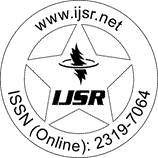Downloads: 137 | Views: 404
Research Paper | Material Science and Engineering | India | Volume 4 Issue 8, August 2015 | Popularity: 6.9 / 10
Graphene, Its Synthesis and Its Application in Anti-Cancer Drug Delivery
Kshitij Chaudhary
Abstract: Graphene, a sp2 hybridized two dimensional lattice of carbon atoms arranged in a hexagonal structure, has become one of the most sought-after nano-technological wonder of the past decade, the underlying reason being its distinct structure and exceptional physical properties. Its properties like, high transparency, zero valence gap, excellent material strength (100 times more than Steel), non-toxicity, high electron mobility etc. , make its applications in electronics, nanocomposites highly promising. A promising area where Graphene shows assurance is targeted drug delivery. Graphene and its oxide (referred as GO) are being researched extensively around the world due to their unique properties two dimensional planar structures, non toxicity, large specific surface area and hydrophobic nature. The only concern is the availability of the suitable size of Single layer Graphene. Growth of Graphene using LPCVD (Low Pressure Chemical Vapor Deposition) method is one of the new revolutionary ideas, which has resulted into higher yields of single layer Graphene. The LPCVD method offers incredible possibility to tailor size, composition, shape of Graphene. Once the Graphene has been harnessed, it is oxidized to form NGO (Nano Graphene Oxide). Polyethylene glycol (PEG) is covalently grafted on NGO which improves the biocompatibility and solubility. Furthermore, an aromatic anti-cancer drug (doxorubicin) is stacked on the NGO-PEG, which delivers drug on a targeted location in the body.
Keywords: Graphene, Anti-cancer, Drug Delivery, LPCVD
Edition: Volume 4 Issue 8, August 2015
Pages: 741 - 744
Make Sure to Disable the Pop-Up Blocker of Web Browser
